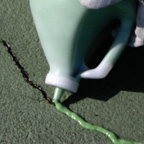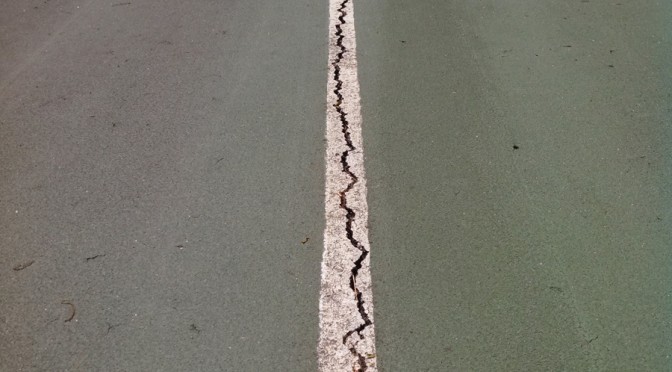Question: How long does tennis court crack filler last?
Answer: Cracking of asphalt and concrete pavement surfaces is a common problem. Even if the asphalt or concrete is properly built, there are still variables beyond the control of the contractor and crack filler producer.
There are different reasons for pavement cracking, but a majority of the cracks on concrete and asphalt courts are structural. This means that the cracks go completely through the pavement layers, into the base of the tennis court.
Acrylic tennis court crack fillers are designed to fill and seal off the surface of the crack. This is designed to minimize water and moisture flowing into the crack and stone base of the court, and slow down degradation of the court through further cracking. The main problem is that once a structural crack opens, there are two separated slabs of pavement constantly moving back and forth. This expansion and contraction happens daily, depending on temperatures, moisture, and other environmental conditions. That being said, cracks that have been filled may open within days, weeks, months, or years of application. An Acrylic crack patch is an ideal solution for this common problem.

Even though we offer some elastomeric acrylic crack fillers, the degree of movement in the crack determines how long the product can perform before breaking open or pulling away from one side of the crack. Frequency of moisture, freeze-thaw, and various climate conditions are other factors that play a role in longevity of crack fillers and repair.
Crack filling is a maintenance role. The best way to maintain a tennis court crack is to fill it whenever you see it open. A good rule of thumb is to check the court(s) over in the spring and early fall (when temperatures are not getting below 50°F or 10°C) and perform necessary crack filling to extend the life of the facility. Many sport surfacing contractors also offer maintenance programs, where they make spring and fall visits annually, and advise court owners of needed crack repairs, resurfacing, or other issues.


